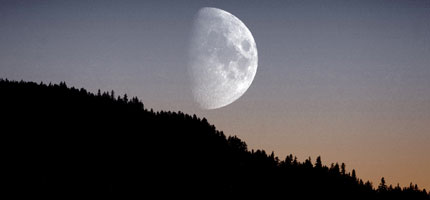
Update: May 2010 saw the launch of a historic accord, the Canadian Boreal Forest Agreement, which brings together 9 environmental groups, including Greenpeace and 21 of the largest logging companies in Canada. The agreement is the first step towards conservation planning for 70 million hectares of Boreal wilderness. It marks the suspension of boycott campaigns directed at AbitibiBowater, Kruger and other members of the Forest Products Association of Canada. Read more »
Stretching from the Pacific to the Atlantic, the Boreal Forest of North America is a colossal expanse of temperate rainforest covering some 5.6 million km2 and accounts for 28 per cent of the remaining intact forest on the planet.
Supporting hundreds of First Nation communities, it also provides refuge for a range of large mammals, including caribou, wolverines, lynxes, bears and wolves that rely on the huge wilderness areas for their survival. Birdlife is also abundant - nearly 50 per cent of all North American species use the forest at some point during the year for nesting and breeding.
The forest's multiple layers of trees, thick moss, soil and peat make it one of the world's largest land-based storehouses of carbon, so it's vital to keep it intact in the fight against climate change.
Wiping away ancient forests
But despite its ecological importance, approximately half of the Boreal Forest has been allocated or licensed to logging companies. The heaviest development is concentrated in the southern reaches of the Boreal, which is also the most productive wildlife habitat.
Over 90 per cent of this area has been clearcut, with individual clearcuts sometimes extending over 10,000 hectares. That's about 17,000 football fields, which makes them some of the largest clearcuts in the world.
The timber is being used for building materials and paper products like office paper, books, catalogues, and toilet paper. One of the biggest culprits is Kimberly-Clark, the largest tissue manufacturer in the world and the company behind well-known brands like Kleenex and Andrex.
On average, only 29 per cent of the pulp used by Kimberly-Clark is recycled and the rest comes directly from forests. Around a quarter of that comes from the Boreal Forest which is literally being flushed down the toilet.
Talking to companies and consumers
As part of our Kleercut campaign, we want Kimberly-Clark to radically improve their policies and end the use of virgin fibres obtained from the destruction of the Boreal Forest. They also need to increase the amount of recycled material in their products, and commit to using only virgin pulp certified by the Forest Stewardship Council (FSC).
To help persuade them, we've been encouraging consumers and other companies around the world to pledge their support and stop buying Kimberly-Clark products until they sort out their act.
We need your help though. Find out more about what you can do to help protect our remaining forests.


